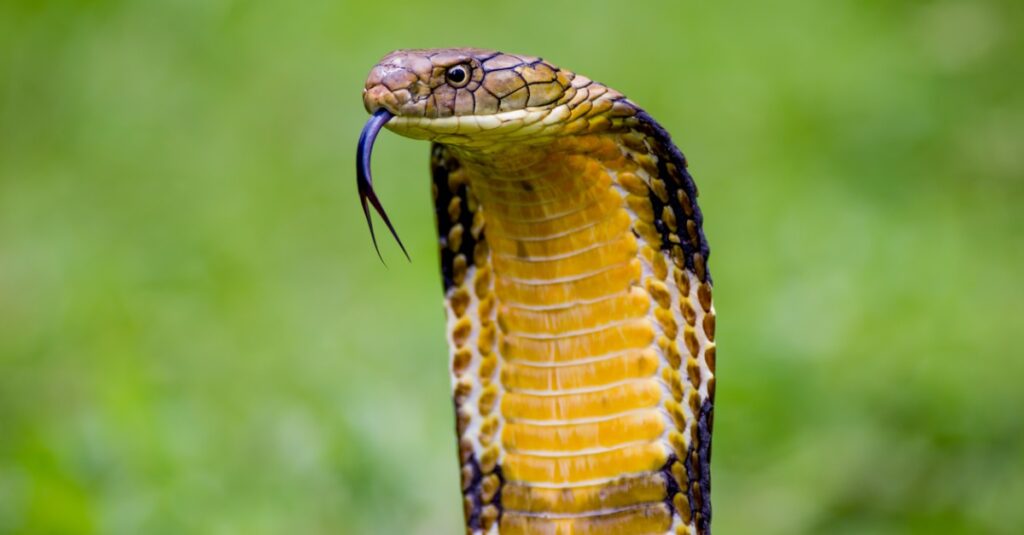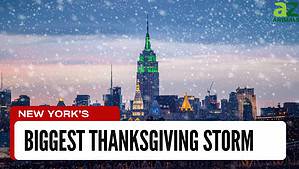Some of the most fascinating animal fights are those that we don’t expect. When we imagine a massive cobra taking on a small mongoose we probably don’t expect it to be much of a fight at all. After all, cobras are so big and venomous that they are surely going to kill and eat mongooses pretty easily, right? Well, think again.
So, why isn’t it an easy battle for a cobra to win? Well, mongooses are super fast and agile and are known as indiscriminate hunters because of their ability to eat anything they can catch and kill. Not only that, but they even have a nifty little characteristic that makes them difficult for snakes to kill.
Comparing Cobra vs Mongoose
Cobras are some of the most feared snakes in the world due to their fast-acting and deadly venom. Not to mention their intimidating appearance and size. On the other hand, mongooses don’t look particularly scary or ferocious. Join us as we compare the two and see exactly how they would get on in a fight.
Check out the chart below to learn a few of the main differences.
| Cobra | Mongoose | |
| Size | Average around 6 feet long, but up to 10 feet depending on the species | The body length of between 10 and 22 inches, excluding the tail. Weigh up to 11 pounds |
| Habitat | Primarily Africa and Asia in grasslands, savannahs, and forests | Primarily found in Africa. Live in a variety of habitats, including forests and woodlands |
| Venomous | Yes | No |
| Appearance & Characteristics | Color varies – usually red, black, yellow, or patterned. Have a hood, smooth scales, and round pupils | Short legs, pointed noses, small ears, long bushy tails, and tough skin. Gray or brown color. Possess some immunity to snake venom |
| Diet | Mice, rats, squirrels, frogs, lizards, birds, and other snakes | Indiscriminate hunters – eat everything they can kill |
| Hunting Tactics | Detect prey by smell (by flicking tongue in and out). Strike and bite the prey and inject venom from their fangs | Quick and agile. Deliver a powerful bite to the skull |
| Predators | Hawks, eagles, crocodiles, mongooses | Hawks, jackals, snakes |
| Lifespan | Around 20 years | Between 6 and 10 years |
The 6 Key Differences Between Mongooses and Cobras

The king cobra is the longest venomous snake.
©iStock.com/takeo1775
Mongoose vs Cobra: Size
There is a vast difference between the size of a cobra and the size of a mongoose. The average length of a cobra is 6 feet long, although they can reach up to 10 feet depending on the species. However, mongooses are much smaller and are only between 10 and 22 inches, excluding their tail. They don’t even weigh very much – only up to 11 pounds. Advantage: Cobra
Mongoose vs Cobra: Venomous
Mongooses are not venomous. However, cobras are venomous snakes that have hollow fangs that are attached to their top jaw. They use these fangs to inject deadly venom into their prey. The venom from most cobras is a powerful neurotoxin that affects the nervous system and causes respiratory failure, muscle weakness, and difficulty breathing. However, some cobras have cytotoxic venom which causes extreme pain, swelling, and tissue death. The king cobra is one of the most venomous cobras in the world and possesses enough venom in one bite to kill twenty people. If a human is bitten then death can follow within only thirty minutes if untreated. Advantage: Cobra
Mongoose vs Cobra: Appearance & Characteristics
Cobras have smooth scales and round pupils. They can be a variety of colors, depending on the species. However, cobras are most famous for their hood. Hooding is their ability to flatten and widen their neck by spreading out their neck ribs. They usually do this while raising the upper part of their body off the ground which creates and incredibly intimidating appearance.
Mongooses are grey or brown and have short legs, pointed noses, small ears, and a bushy tails. They are incredibly quick and agile which makes them able hunters. They also possess characteristics that mean that they have the edge over cobras in a fight. Mongooses have tough skin which provides some protection against bites. However, their most unique defense is their natural protection against cobra venom. Mongooses have acetylcholine receptors that are slightly mutated. This prevents the venom from binding to the cells in mongooses and killing them the way it does all their other prey. However, mongooses are not entirely immune to snake venom, but it takes approximately eight times as much venom to kill one than it does a rabbit – meaning that the cobra would need to get in several bites. Advantage: Mongoose
Mongoose vs Cobra: Diet
Cobras eat a variety of prey – including birds, lizards, mice, rats, squirrels, and even other snakes. Mongooses are known as indiscriminate hunters as they literally eat anything that they can kill. However, their main diet is rodents, birds, frogs, insects, and reptiles. They are even known to break open eggs and crabs by using their front paws to throw them at a solid object such as a rock.

Mongooses are quick and agile hunters
©Oscar David Toledo Marin/Shutterstock.com
Mongoose vs Cobra: Hunting Tactics
Once a cobra has detected their prey they strike with lethal accuracy and inflict a deadly venomous bite. Their venom is injected into their prey using their hollow fangs.
Mongooses are quick and agile and have extremely strong jaws. They usually kill their prey by inflicting a lethal bite to the back of their head, crushing the skull. Advantage: Mongoose (considering they have tough skin and immunity against cobra venom)
Mongoose vs Cobra: Who Would Win in a Fight?
Although it would be easy to assume that cobras instantly have the advantage because of their much larger size and venomous bite, the truth is mongooses actually come out on top. This is because they are as so fast and agile that they are usually able to leap and bite the cobra on the back of its skull before it even has a chance to strike. Sometimes the cobra tries to wrap itself around the mongoose to slow them down enough to bite them if the mongoose has missed its first bite. Cobras actually fear mongooses so much that they try to avoid confrontation with their formidable little opponent. Due to the mongoose’s natural defense against snake venom, the only way a cobra can kill them is with several bites. However, mongooses actually win around 75 to 80 percent of fights with cobras.
Once the mongoose has killed the cobra they sometimes eat them – fangs and venom sacs included. As venom has to be injected to be effective it poses no threat to the mongoose when it is ingested. However, on rare occasions, the mongoose can come off worse even after defeating the cobra. This is because if the mongoose is really unlucky then the cobra’s fangs can pierce its stomach lining.
FAQ’s (Frequently Asked Questions)
Are mongooses dangerous to humans?
No, mongooses are generally not aggressive toward humans and prefer to run away.
Can mongooses kill king cobras?
Yes, despite king cobras being the longest venomous snake in the world, mongooses are one of the few natural predators of them.
Could a King Cobra Defeat a Honey Badger?
Mongooses have evolved to prey on snakes with their ability to tolerate the reptiles’ deadly venom and seem to always come out on top. But how would the king of snakes fare against a different foe – one not renowned for killing cobras in particular – just known for being as mean as a snake?
Honey badgers are known for being among the toughest animals on the planet – larger than mongooses, honey badgers are like little relentless tanks! At most, they weigh around 35 pounds – but it’s 35 pounds of muscle encased in a thick hide that hangs loosely to allow the honey badger to escape from the jaws of its enemies. Porcupine quills can’t even penetrate it!
King Cobras slither along with lengths of nearly 18 feet and weigh around 13 pounds. One bite of their deadly venom can kill an elephant! Their forked tongues can detect prey almost 328 feet away. Honey badgers also have a great sense of smell and good eyesight as well.
In addition to its thick loose hide and a foul-smelling anal gland squirt, honey badgers also have an adaptation for resisting bee stings and snake venom. Combine those traits with a jaw powerful enough to crack open a turtle’s shell or a snake’s head – and the animal’s extreme aggressiveness and total lack of fear – and you have a winner. The mean as a snake honey badger would crack that snake’s skull wide open!
The photo featured at the top of this post is ©
Thank you for reading! Have some feedback for us? Contact the AZ Animals editorial team.







